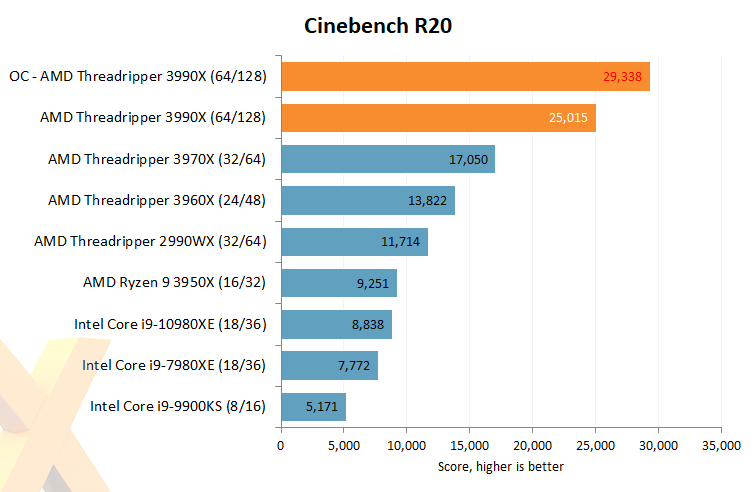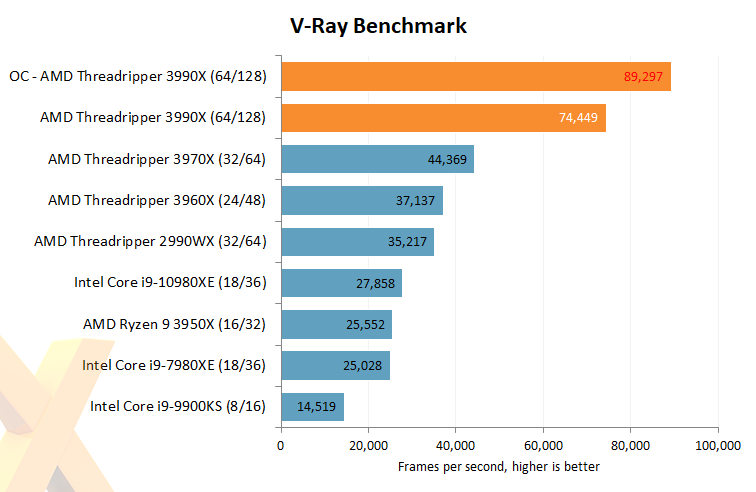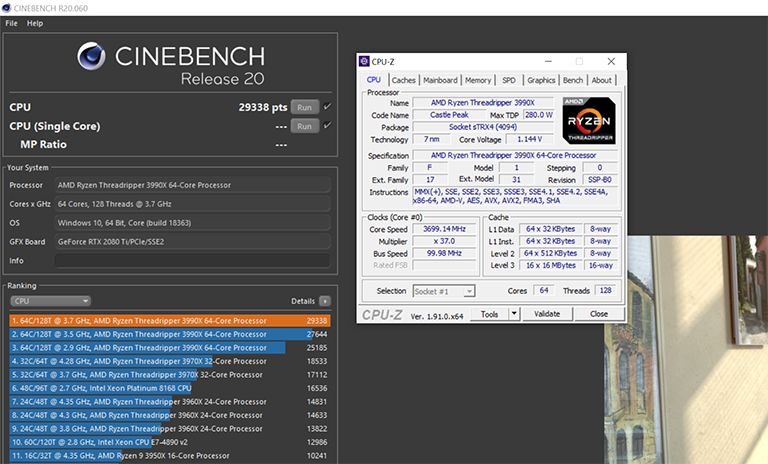Overclocking
Overclocking the chip is a little different compared to all other processors. You see, the chip's voltage and speed parameters are governed by in-built settings that keep to a maximum 280W TDP. AMD knows that adding extra voltage and speed increases the TDP very quickly, moreso on this processor given its huge 128-thread capability.
After some trial and error, it transpires that evacuating the heat is the biggest hurdle to overclocking. For example, we have already seen that maximum platform-wide power draw is 426W. We see it go past 700W fairly quickly in KeyShot once the speed is increased, making it impossible for the Fractal Celsius S24 to keep it cool under prolonged load.
Eventually, we undervolted the chip to 1.075V and ran an all-core 3.7GHz. Even then, platform power draw hit 688W, and the cooler was just about capable of keeping the chip the right side of 115°C after a 10-minute run, which we judge to represent very basic stability.
The chip runs even faster, but we can't keep it cool enough to complete taxing benchmarks, and it's cooling that is going to be the limiting factor for anyone fortunate enough to buy one and overclock it.

Nearly 30K? No problem.

Thought nearly 75K was fast? Think again. Running 3.7GHz on all cores gives almost 90K. Beat that if you can.

The reason that Blender doesn't scale as well as the other two benchmarks is down to the first minute being setup time, which is lightly threaded. Combining light and heavy loads is interesting as it tests the whole chip's performance. Whichever way you cut it, Ryzen Threadripper 3990X is mighty fast.










